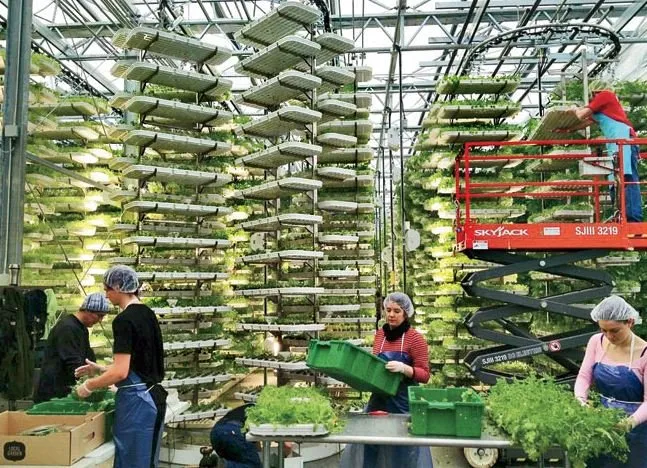

By 2050 the world will need to feed an additional two and a half billion people living in cities. Yet as the demand for food increases the amount of space available for agriculture is expected to fall especially in developing economies. Around 80% of the world's farmable land is already in use.
To tackle this situation a new and smart kind of farming is slowly but steadily getting popular. Well, I'm talking about soil free urban farming which could be the way of the future. This kind of farming can be setup anywhere in the world regardless of the climate changes.
Given the input costs such as power and labor are high but because the farm operates 24/7 throughout the year, the final output is maximized resulting in an increase in profits for the people who invest in indoor/vertical farming.
The objective of these so called Vertical Farms is to build farms in cities all over the world so that people have access to fresh, great tasting and nutritious food.
Agriculture is the most healthful, most useful and most notable employment of man. - George Washington

Technology behind indoor/vertical farming
Most crops are grown using Aeroponic technology. The roots sit in water and one tries to oxygenate the water. Nutrition is then mist to the root structures which results in better oxygenation.
According to some of the big players in vertical farming space, this root misting system allows them to use 95% less water compared to a traditional method of farming. Also, no pesticides are used during the entire crop production cycle. And since this kind of farming is done indoors LED lights are used as a replacement to Sunlight.
The scheme ditches the romanticized ideal of farming, acres and acres of open fields dotted with men and women toiling in the sun, getting their hands dirty, in favor of enclosed urban spaces where engineers, electricians and harvesters mill about, wearing protective clothing, masks, and gloves. - David Rosenberg (CEO AeroFarms)
Please check out this detailed infographic on vertical farming to make things more clear to you.


There are all these stresses on our planet. 70% of our waste water contamination comes from agriculture. 70% of our fresh water usage goes to agriculture. All these macro trends point to the fact that we need a new way to feed our planet. Vertical farms definitely have the capabilities to feed overpopulated cities across the globe while using less land and less water.
Vertical farms would also cut greenhouse gases by eliminating the need to transport food over long distances. Over the past few years, vertical farms have sprouted all over the world. I know it is a tough business and government have to play a pivotal role in promoting vertical farming. It is going to have a bigger impact.
Do you guys think vertical farms will help in solving our food problems? Please share your opinion in the comments below.
References and further reads: 1, 2 & 3

